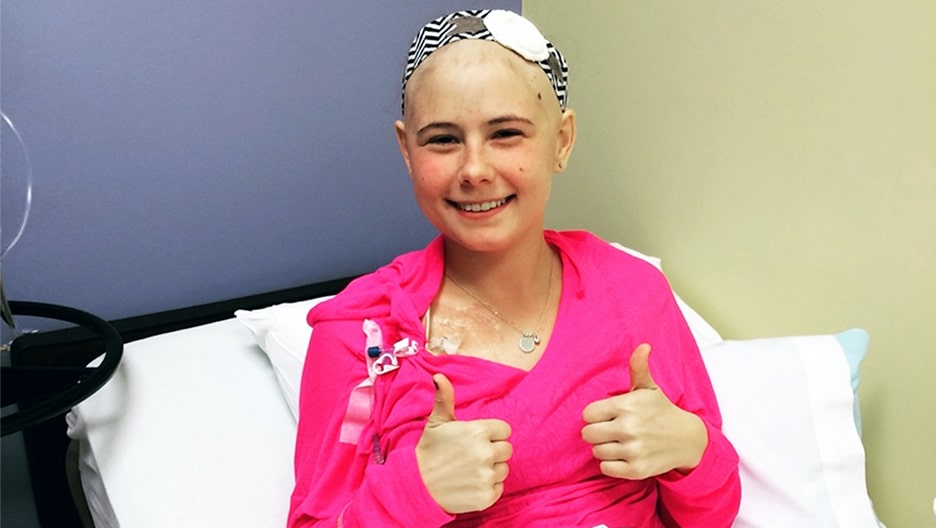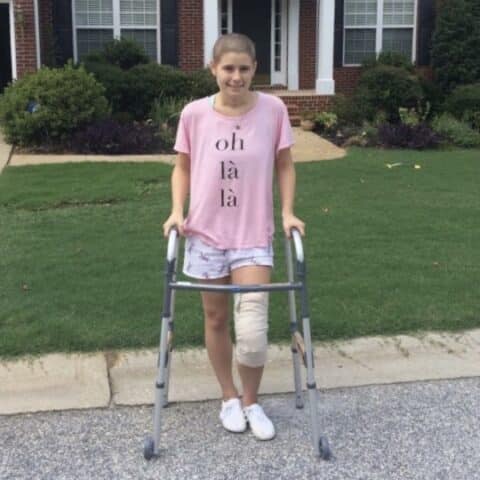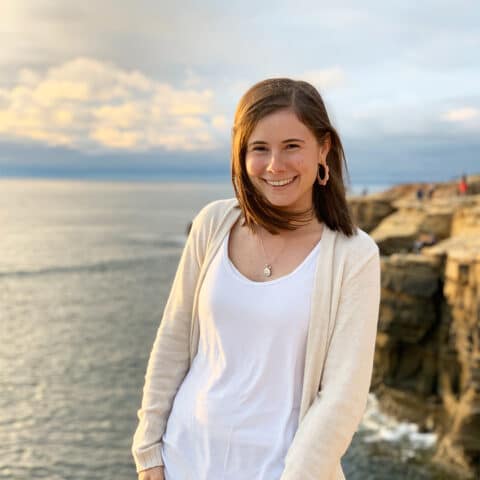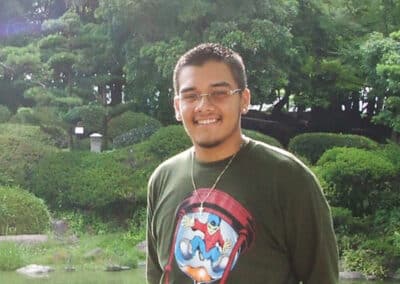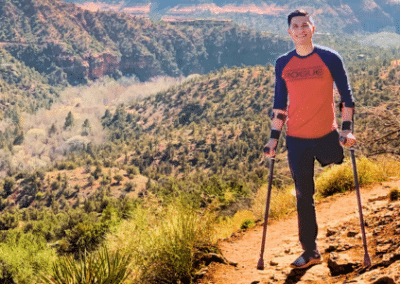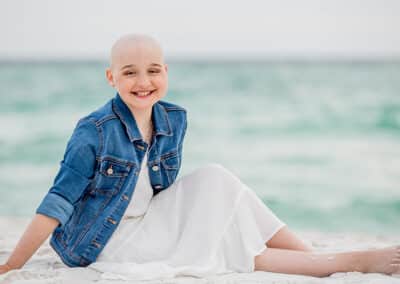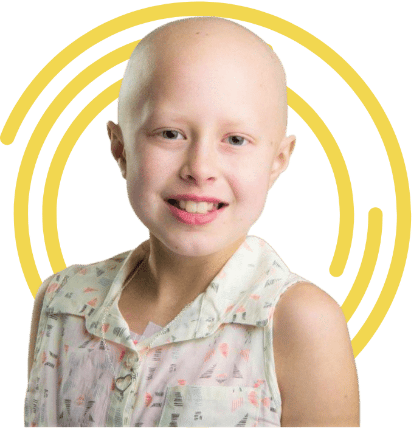An Unlikely Discovery
Her doctor spotted a “density” on the X-ray and recommended Samantha get an MRI. She had the MRI on the last Friday of her Spring Break, and then returned to her campus that weekend.
On Monday, March 16, 2015, Samantha was on her way back from class when her phone rang. It was her doctor, asking her to come in as soon as possible with her parents to discuss the MRI results. She says, “That is when I knew this was something more serious.”
The MRI revealed that the density was a tumor, likely osteosarcoma, and later that day an orthopedic oncologist confirmed the diagnosis.
“I remember feeling like the world was spinning out of control and I was stuck in one spot,” remembers Samantha. “I thought my biggest problems that week were going to be my math exam and readjusting to waking up early after Spring Break. I would have given anything to go back to just being stressed about a math test.”
From College Campus to Cancer Clinic
Samantha moved back home. More tests, scans, and appointments followed. Luckily, scans revealed that the cancer had not spread beyond the bone.
Instead of going to classes, studying, and socializing with friends, her schedule now consisted of chemotherapy infusions and doctor’s appointments. A limb salvage surgery followed, with months of physical therapy to relearn how to walk. “It was brutal — and that is putting it mildly.”
Because of her age, Samantha was treated in the adult oncology clinic. “I was always the youngest patient by a solid 20 years,” she says. “I remember thinking that there had to be a way to improve this situation because there was no way I was the only one in my twenties going through cancer treatment.”
